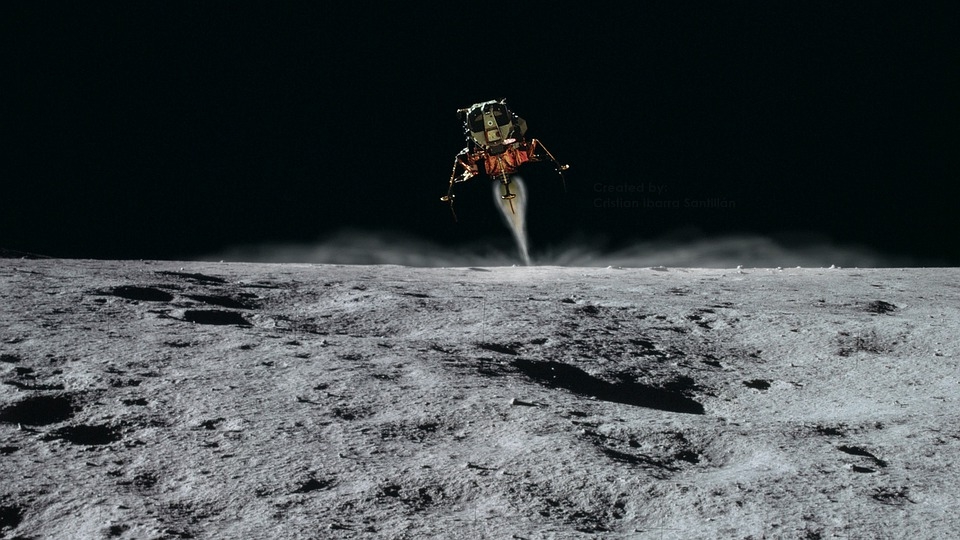Last week was the 51st anniversary of the historic Apollo 11 mission, where the world witnessed not only the end of the Space Race, but also the first men who set foot on the surface of the Moon. In a recent interview, Apollo 11 scientist Professor Farouk El-Baz recalled how NASA raised the concern about the Eagle lunar lander’s touchdown on the lunar surface.
Speaking to Express, Professor El-Baz, who was the leading geologist during the mission, shared how there was some debate among groups of scientists on where should astronauts Neil Armstrong and Buzz Aldrin land, which would ultimately become Tranquility Base. He shared that the engineers set guidelines in choosing where to land and that it had to be a zone five degrees north of the equator, five degrees south, and 45 degrees each east and west.
The reason for this was because this spot would be the easiest place to land. However, Professor El-Baz recalled, that exact zone appeared to have the dark-looking rock on the Moon known as marea, the Italian word for sea, named by Galileo, which was also assumed to be a volcanic rock at the time.
“Then some other scientist would come along and say ‘not at all, this is very dense material and landing on it will be very difficult’ they feared the spacecraft would collapse on impact. They believed it would be so attracted to the surface, but others would say that since it is volcanic rock then it would be powdered on impact and there would be a huge layer of powder on top,” shared Professor El-Baz.
However, he said he was able to convince his colleagues by explaining that because there are craters on the Moon, it was a rock, and thus it was hard enough for the lander to land on.
Professor El-Baz also revealed that he instructed Armstrong and Aldrin to complete this secondary mission while they were on the Moon. The secondary mission was going to play a big part in future space missions. He shared that he trained the two astronauts to take photos of areas on the Moon that NASA referred to as “targets of opportunity.”
However, because the astronauts that would be part of the mission had a very packed schedule, they were given very limited time to go over the science. Professor El-Baz also revealed that it was the reason why Armstrong ran back at the last minute to take photos and note the thickness of the soil on the surface of the moon.



 The brain is the most complicated object in the universe. This is the story of scientists’ quest to decode it – and read people’s minds
The brain is the most complicated object in the universe. This is the story of scientists’ quest to decode it – and read people’s minds  Black hole, neutron star or something new? We discovered an object that defies explanation
Black hole, neutron star or something new? We discovered an object that defies explanation  Customizing mRNA is easy, and that's what makes it the next frontier for personalized medicine − a molecular biologist explains
Customizing mRNA is easy, and that's what makes it the next frontier for personalized medicine − a molecular biologist explains  Synthetic human embryos let researchers study early development while sidestepping ethical and logistical hurdles
Synthetic human embryos let researchers study early development while sidestepping ethical and logistical hurdles  How do airplanes fly? An aerospace engineer explains the physics of flight
How do airplanes fly? An aerospace engineer explains the physics of flight  The mystery of consciousness shows there may be a limit to what science alone can achieve
The mystery of consciousness shows there may be a limit to what science alone can achieve  What is minoxidil, the anti-balding hair growth treatment? Here’s what the science says
What is minoxidil, the anti-balding hair growth treatment? Here’s what the science says  Why now is the time to address humanity’s impact on the moon
Why now is the time to address humanity’s impact on the moon  The brightest object in the universe is a black hole that eats a star a day
The brightest object in the universe is a black hole that eats a star a day  Why some people don't trust science – and how to change their minds
Why some people don't trust science – and how to change their minds  A Nasa rover has reached a promising place to search for fossilised life on Mars
A Nasa rover has reached a promising place to search for fossilised life on Mars  Orbital resonance − the striking gravitational dance done by planets with aligning orbits
Orbital resonance − the striking gravitational dance done by planets with aligning orbits  Eggs from men, sperm from women: how stem cell science may change how we reproduce
Eggs from men, sperm from women: how stem cell science may change how we reproduce  Alpha, beta, theta: what are brain states and brain waves? And can we control them?
Alpha, beta, theta: what are brain states and brain waves? And can we control them?  Dark energy is one of the biggest puzzles in science and we're now a step closer to understanding it
Dark energy is one of the biggest puzzles in science and we're now a step closer to understanding it 































